SCHOCH TILE
CARPET
Classic Comfort
Carpet By Schoch
Click Each Section For More Details
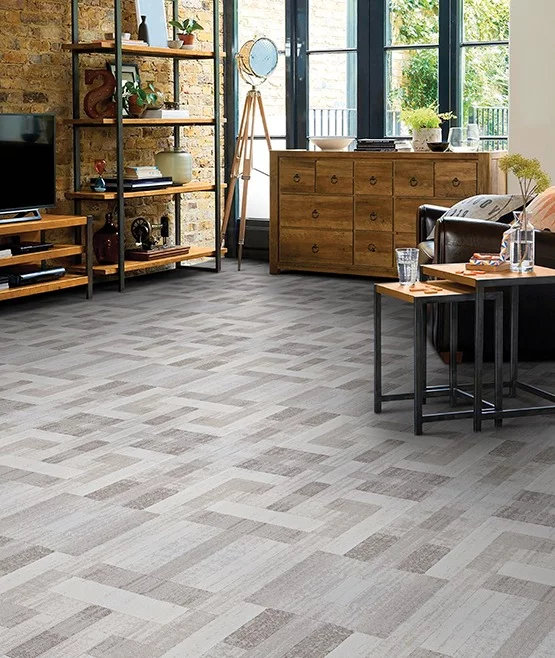
OUR KNOWLEDGE ABOUT CARPET SETS US FAR ABOVE THE COMPETITION
Our goal is to provide you with quality carpet products that will beautify your home, meet your specific performance and budget needs, be easy to care for, and stand the test of time. We also strive to be committed partners in guiding you to the best choice of carpet for your home. We also commit to providing you with incredible customer service.
We want you to know all about carpet. Whether it is at our store or here within our website, we want you to understand, learn, and experience as much about carpet as needed to feel comfortable with your decision. We call on our experience to provide you with valuable information, delivered in an easy-to-understand way so that you can make the smartest carpet decisions for your family and your home. If carpet is a possibility, you’ve come to the right place and to the right people.
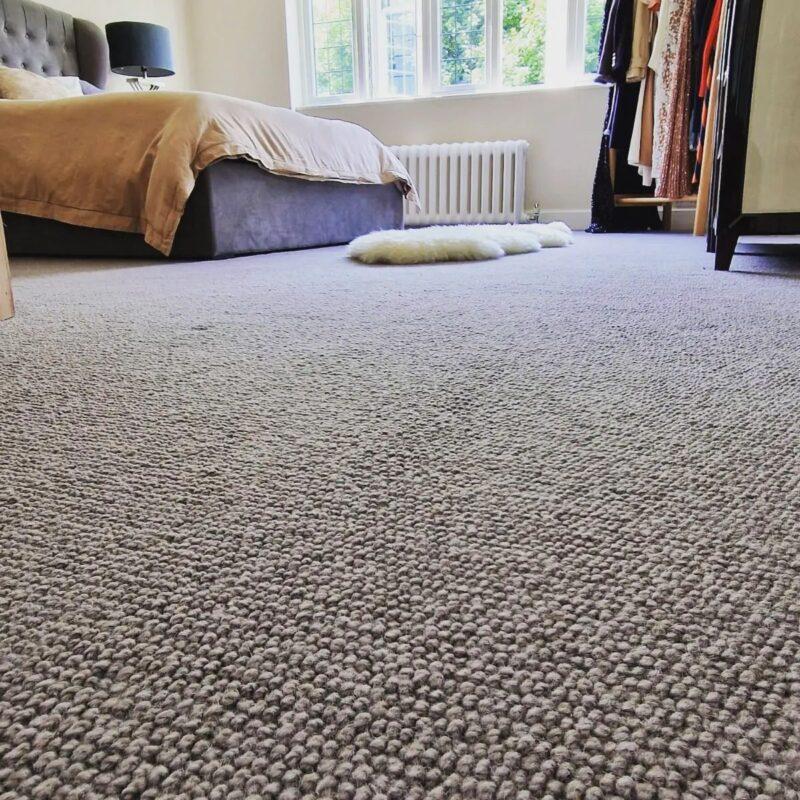
TODAY’S CARPET IS ROOTED IN ANCIENT AND BEAUTIFUL CONCEPTS
Modern carpet traces its roots to ancient times when cultures passed hand-tying and knotting skills from generation to generation. The Sixteenth Century brought merchant adventurers and explorers home to Europe and with them awareness and desire for rich textiles and rugs from the East. It wasn’t long before the appreciation of textile floor coverings grew and were brought to America. Here carpet became one of the most fundamental and beautiful parts of our modern home interior.
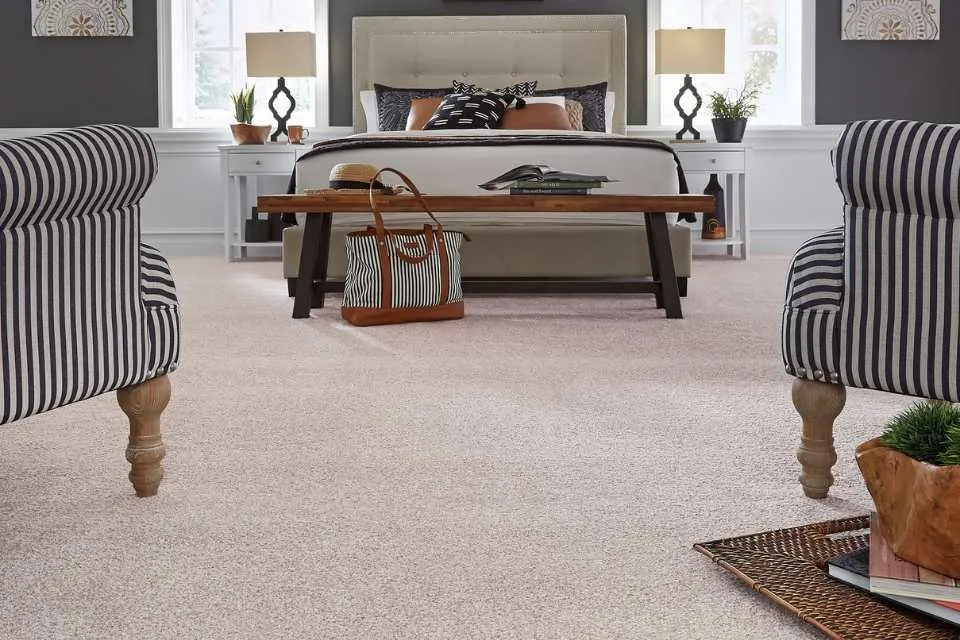
CARPET IS POPULAR FOR MANY REASONS
Carpet is still the primary flooring choice for many. After all, it is relatively inexpensive, comfortable, easy to install and replace, and it offers an array of colors and textures. Carpet offers you more warmth, softness, and is much quieter than any other floor covering. Today’s carpet blends well with any home decor and with a variety of other flooring products. From traditional and formal to casual and country, we can help you find a carpet that will complement any interior setting and give you years of beauty and performance.
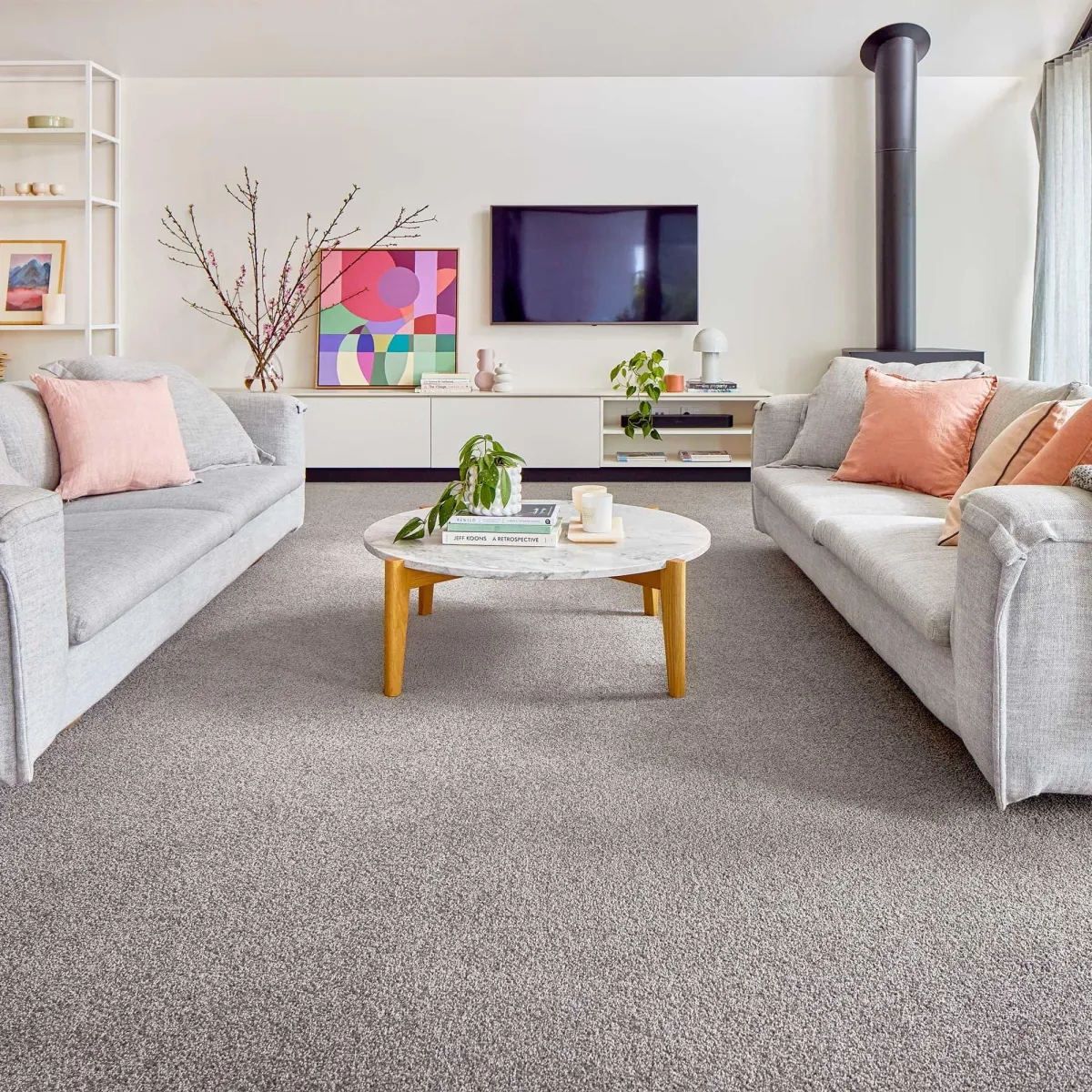
KNOWING HOW CARPET IS MADE CAN BE VERY ADVANTAGEOUS.
This knowledge enables you to understand the product’s materials from birth. Knowing the different materials that make up carpet also helps you understand and evaluate their performance aspects such as why certain carpets are easier to install, why some wear better and longer, and why others are easier to care for and clean. Understanding carpet manufacturing and materials can make you a more informed shopper, help you determine the value, and keep you inside the borders of your home improvement budget.
TO UNDERSTAND CARPET IS TO KNOW ABOUT FIBER.
Fiber is the basic material of which carpet is made. Over ninety percent of all the carpet made today is made from synthetic fiber. The rest is natural fiber, most commonly wool. Synthetic fibers are made of one of three materials: nylon, polypropylene, or polyester. All three are created by similar chemical processes using oil and natural gas.
NYLON LEADS THE WAY.
Almost 75% of carpet today is made of nylon and compared to the other fibers, it performs best overall. Nylon is the leader in appearance retention, fade and heat resistance, soil and stain resistance, and color and styling.
POLYPROPYLENE IS GAINING POPULARITY.
The next most common material used in carpet fibers is polypropylene. It has seen fast growth and represents more than 35% of the total fibers used in the carpet industry. While polypropylene is not as resilient or resistant to abrasion as nylon, it is naturally stain, fade, and moisture resistant. Polypropylene is most often used in loop pile carpet constructions.
POLYESTER’S PERFORMANCE SATISFIES MANY.
The third type of material used in carpet manufacturing is polyester. It is well accepted for its bulkiness, color clarity, and stain and fade resistance. Today’s new technologies allow polyester to be a good performer.
WOOL IS NATURAL AND EXPENSIVE.
The other type of fiber used in carpet construction is staple fiber, made from wool, and is a natural product. The wool used in today’s carpet comes primarily from New Zealand, Argentina, and the United Kingdom. Since wool is a natural fiber, it ranges in color from off-white to black, with many earthen tones in between. Although wool doesn’t stand up to abrasion and moisture as well as synthetics, it cleans well and is known to age gracefully. Wool is the most expensive carpet fiber and represents less than one percent of the U.S. carpet market.
CARPET IS MADE IN A THREE-PART PROCESS.
TUFTING
The first step to making carpet begins with tufting. This is a process of weaving the fibers into a primary backing material made of woven polypropylene. Its main value is to provide a base cloth to hold the yarn in place while the tufting happens. Tufting is done with a tufting machine that has up to 2,000 needles working together to pull the yarn through the primary backing material. As the needles penetrate the backing, a small hook, called a looper, grabs the yarn and holds it in place. This process results in what is called loop pile construction. Loop pile products hold their appearance exceptionally well because there are no exposed yarn tips.
In some carpet styles, the looper then rocks back against a knife, where the loops of yarn are cut, creating what we call a cut pile carpet. The length of these cut pieces of yarn is referred to as the pile height. The precision cuts are controlled by a computer and can be programmed to cut only some of the loops. This method of selectively cutting, called cut and loop construction, creates a recognizable pattern on the surface of the carpet.
APPLICATION OF DYE
The second step of carpet manufacturing is the application of dye. Carpet can be taken through one of two dyeing processes. The first method of dyeing is called yarn dyeing or pre-dyeing. This is when color is applied to the yarn prior to tufting. The second method involves applying color to the yarn after the carpet has been tufted. This method is called carpet dyeing. Carpet dyeing can be done through three different techniques.
The first technique, often referred to as Beck or batch dyeing, involves stitching the end of the carpet together and then running the tufted carpet loop through large vats of dye and water for several hours. This process is ideal for smaller production runs and heavier face weight products.
Continuous dyeing is a similar process but involves running the carpet through several processes in addition to just the dye application. Continuous dyeing applies the color directly to the carpet face by spraying or printing. This process can be used to create multicolor or patterned effects.
Screen printing is another common method of carpet coloring and color is applied through silk screens. The major benefit of carpet dyeing after the tufting process is greater color flexibility and a lower cost.
FINISHING
The third and last step in the manufacturing process is the finishing process. This is typically a single production line that completes the final stage of the carpet construction. In the finishing process, a coating of latex is applied to both the tufted, dyed carpet’s primary backing, and is also added to a secondary backing. The secondary backing is typically made of a woven synthetic polypropylene material. The two parts are squeezed together in a large heated press, where they are held firmly to preserve their shape. Shearing happens during this time and all the loose ends and projecting fibers are removed. This also helps achieve the yarn’s tip definition. Finally, each carpet is carefully inspected for color uniformity and other manufacturing defects before it is rolled, wrapped, and shipped.

Ceramic Tile Is Dynamic
Ceramic tile’s unique character and texture adds energy, excitement, and enhancement to any room. The multitude of styles, shapes, patterns, colors, and finishes offer you a home that can range from elegant and quiet to vibrant and provocative. Ceramic creates magic and mystique. With a tradition that dates back to ancient civilizations, ceramic tile can be found in ancient structures all around the world.

Ceramic Tile Is Dynamic
Ceramic tile’s unique character and texture adds energy, excitement, and enhancement to any room. The multitude of styles, shapes, patterns, colors, and finishes offer you a home that can range from elegant and quiet to vibrant and provocative. Ceramic creates magic and mystique. With a tradition that dates back to ancient civilizations, ceramic tile can be found in ancient structures all around the world.
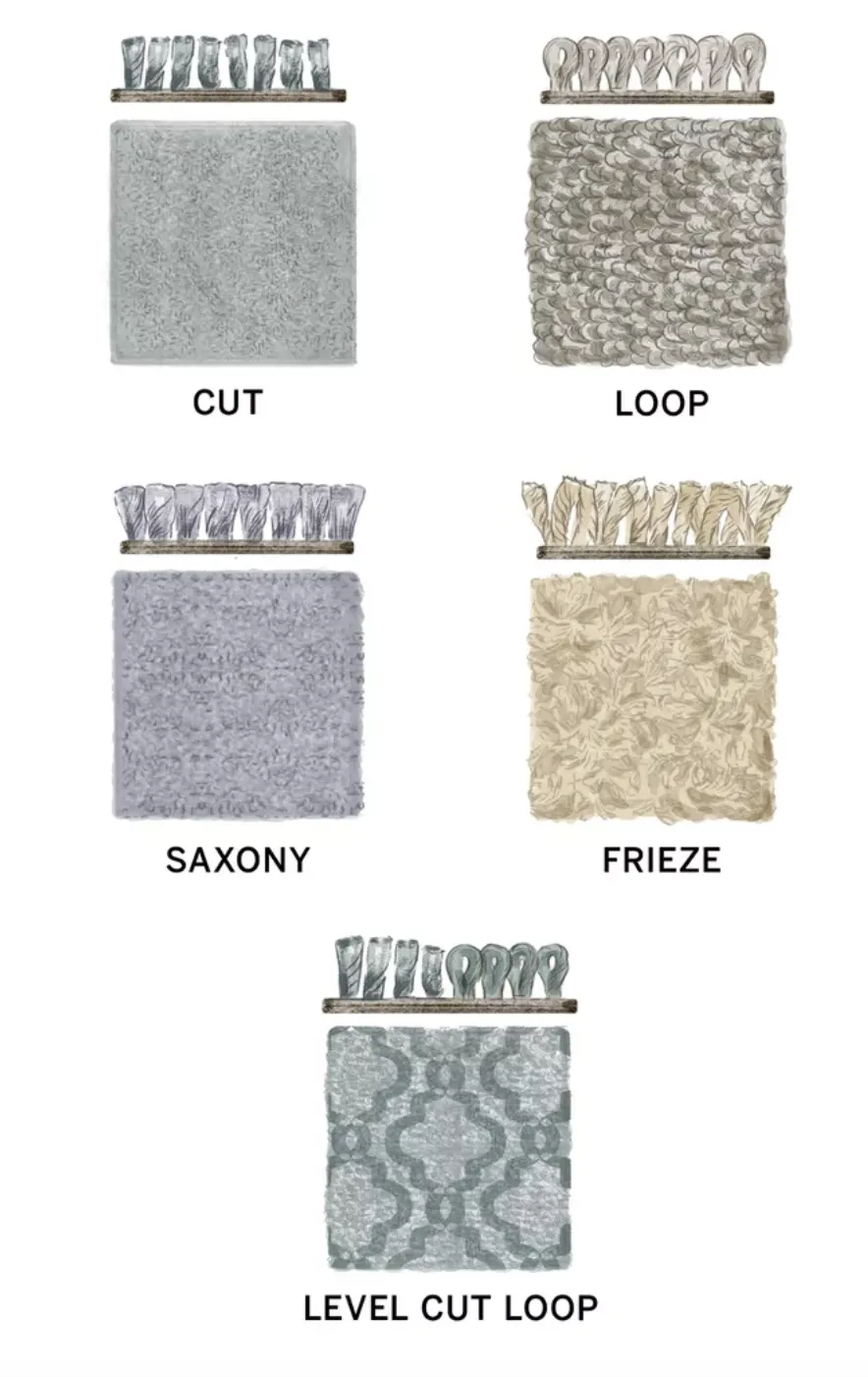
SO MANY BEAUTIFUL AND STYLISH CHOICES.
Each style has its own characteristics and performance capabilities. You should carefully consider each style’s features, qualities, and conditions while making your buying decisions.
Textured: This is a very popular cut pile carpet that has alternating twists of yarn creating a two-tone appearance. The textured surface of this style of carpet does a great job of hiding footprints and vacuum marks. It creates a more casual atmosphere in the room. Textured carpets are great for all areas in the home. They are ideal for today's active families and are available in a broad range of prices.
Saxony: This style offers a more formal, traditional, and elegant look. It has a smooth, soft, velvet plush look and luxurious feel. Each yarn has a uniform twist and finish, making this carpet the perfect solution for a master bedroom, dining room, or a formal living room. This style is not ideal for high traffic areas or rooms with active children, as it will show footprints and vacuum marks.
Frieze: For an active area, a frieze carpet is ideal. This is a cut pile style that has a very high twist level. This creates a textured surface with a knobby appearance and a carpet with high durability. This carpet is a great performer in high-traffic areas and can go anywhere in your home. It hides footprints well and is available in a variety of pile heights that can create a variety of looks.
Cable: This is a carpet constructed of thicker, longer yarn. It is very comfortable underfoot and is beautiful in a bedroom or living room. This style is better suited for rooms without a lot of activity. It can matte and crush with heavy foot traffic, so it is not recommended for stairs, hallways, and other busy areas in your home.
Looped: This carpet is often referred to as Berber. Looped carpets are very durable and are ideal for casual, active family rooms, and come in solid colors, Berber fleck, and patterns with varying loop levels. This carpet hides traffic patterns well but be advised that this style may make seams more apparent and its backing more visible on stairs. It is a great all-purpose carpet that can be a long-lasting performer.
Cut and Loop: This style is often referred to as patterned carpet. Cut and loop is a combination of cut and looped yarn that creates pattern effects by the variation in surface textures. These carpets are low profile and thus perform well. This style is used in casual and traditional rooms and available in many patterns including fun geometrics and formal botanicals. The distinctive carved appearance and multiple colors do a great job of hiding stains and standing up to traffic.
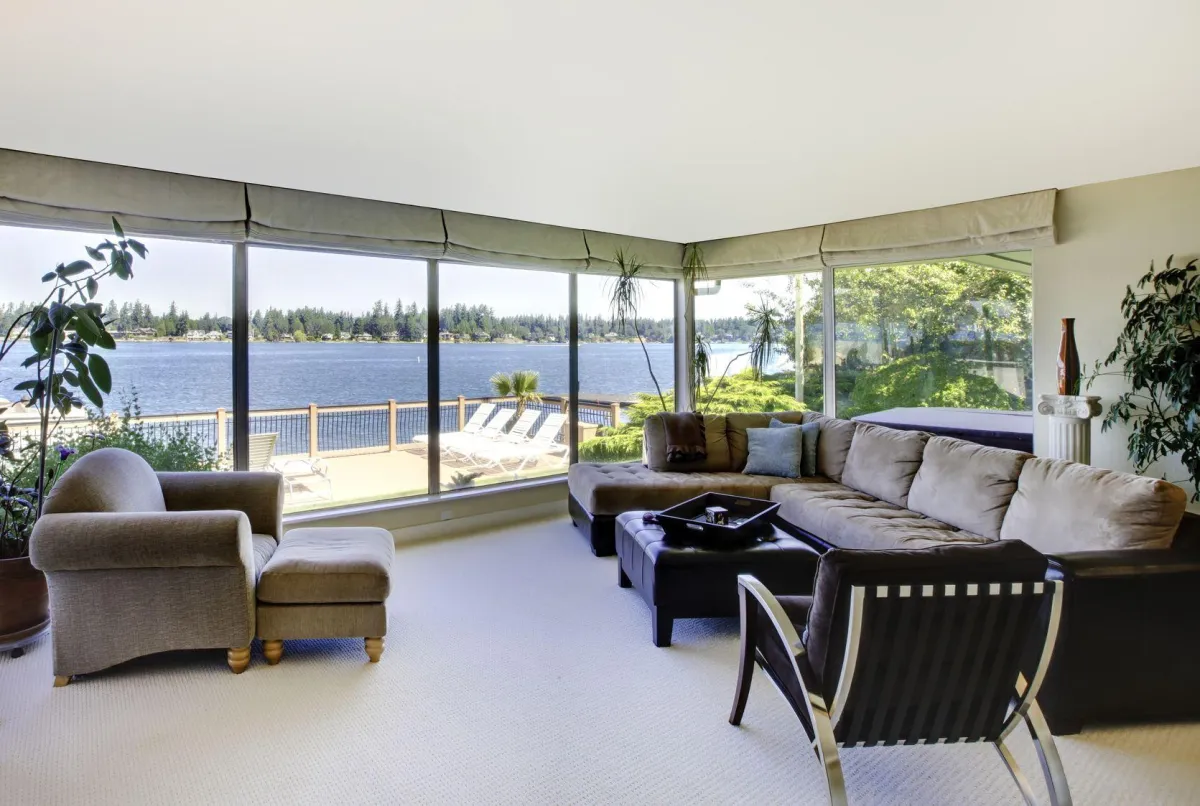
WE WANT YOU TO BE ABLE TO MAKE A SMART PURCHASE
Choosing the best carpet is about knowing the right combination of characteristics, aesthetics, performance, and budget to best meets the needs of your lifestyle. We want you to know all the important facts about carpet specifics and characteristics. The more you know, the better able you will be to make a smarter purchase decision.
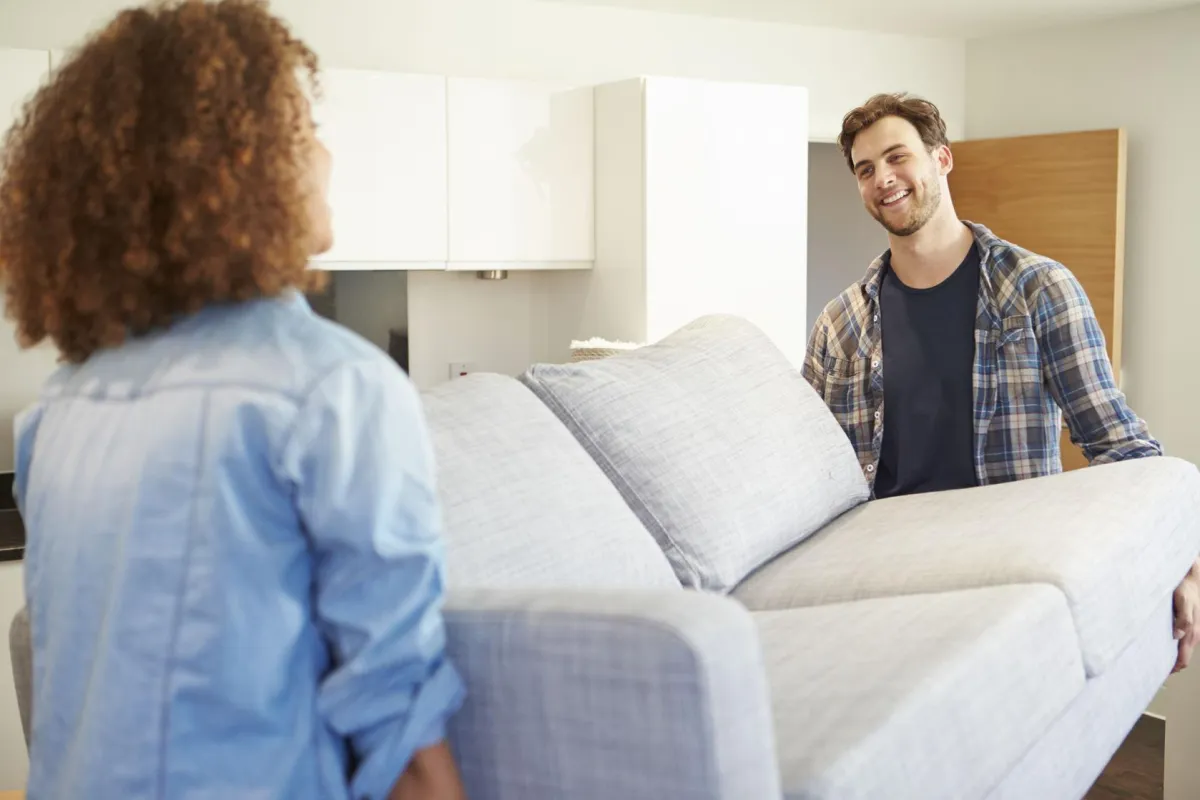
BE PREPARED BEFORE INSTALLATION DAY
We want you to be as well prepared as possible for the installation of your new carpet. Remove all furniture and other objects from the areas to be carpeted. Remove old floor covering at least one day prior to installation to allow for cleanup and floor preparation. If removing old carpet, leave tack strips in place and pull the staples out the floor from the original pad. In many cases, moldings and baseboards need to be removed for carpet installation.
Your existing subfloor may need to be prepared to receive the carpet or a new subfloor may be required. There is always the possibility that doors may not clear the new carpet and swing free. Some installers will remove doors in order to install the carpet and rehang them. You may need to arrange for a qualified carpenter to provide this service after the installation of your new carpet. Installing new carpet will produce waste. Usually, these materials are collected by your installer and left at your trash collection site.
INSTALLATION DAY REQUIRES YOUR PRESENCE
Be prepared to be at home the day of your installation. Be available in case the installation crew has any questions. Your presence will ensure that the correct carpet is installed in the right areas. Because it is difficult to estimate the length and circumstance of each job, installers may not be able to give you the exact time of arrival. We suggest you be flexible and keep in touch with your retailer and installer. A variety of tools will be used for your install and the area can be hazardous. Be sure that your children and pets keep out of the work area on installation day. We recommend that you do a walk-through with the chief installer prior to the completion of the installation. This will give you the opportunity to ask questions and be clear about any final details.

WHAT TO DO AFTER INSTALLATION DAY
Be sure to establish good ventilation after your install. Some of the chemicals used in the construction of carpet, as well as adhesives and seaming tapes, can have an odor for as long as 72 hours after installation. Shedding is a natural part of new carpet. Frequent vacuuming for the first few days should remove any loose fibers from the surface. Sprouting refers to small tufts of carpet that become visible after the installation. Use a small pair of scissors to carefully trim any tufts so they are flush with the surface of the carpet. If any wrinkles or ripples appear, it may be necessary to re-stretch the carpet. Please contact us to have this done professionally.
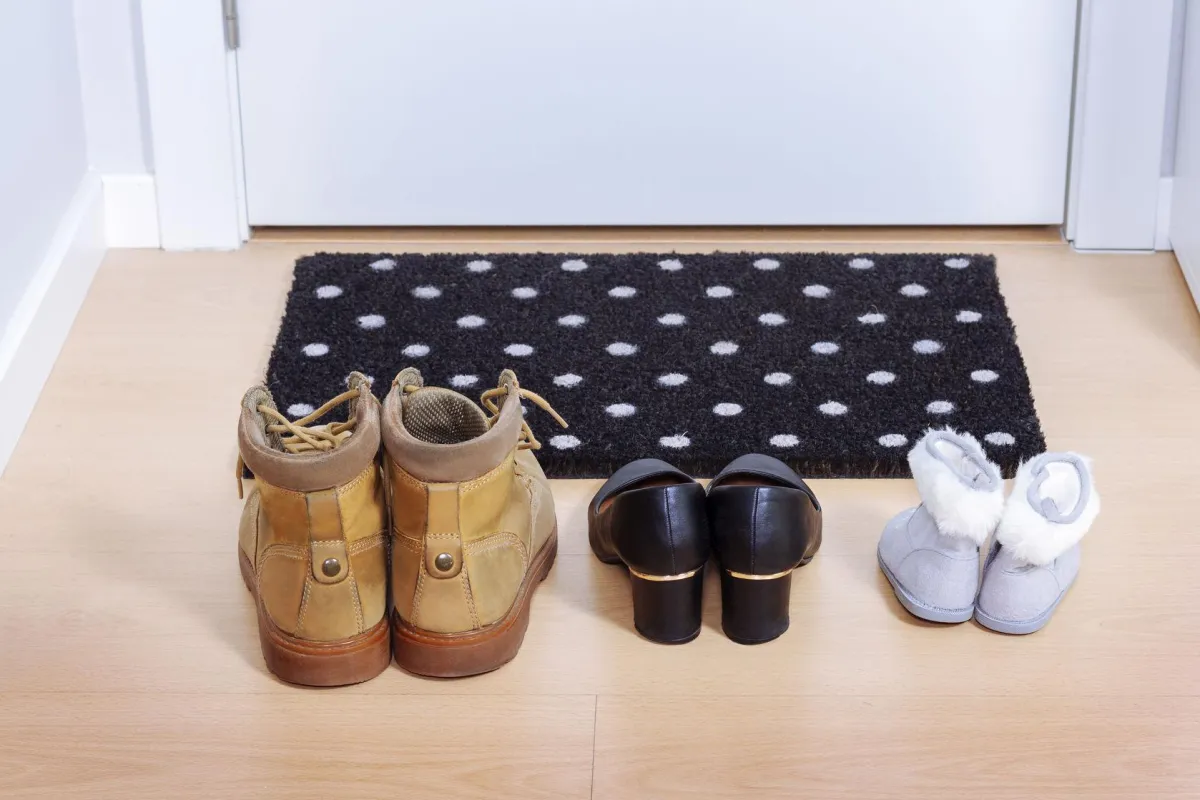
KNOW HOW TO PROTECT AND MAINTAIN YOUR CARPET
We want you to know that by following these care guidelines, your new carpet can stay attractive for many years.
Backing/Primary Backing
The primary backing material of carpeting is usually made of woven polypropylene and its main value is to provide a base cloth to hold the yarn in place while the tufting happens.
Berber
A looped style carpet is often referred to as a Berber. Berbers are big bulky yarns with characteristic color flecks that are either produced in a level loop or multi-level loop carpet construction. Although many Berbers are made out of olefin fiber, some are made with nylon, or a blend of various carpet fibers.
Cable
A style of carpet constructed of thicker, typically longer yarn that is better suited for rooms without a lot of activity. It can matte and crush with heavy foot traffic so it is not recommended for stairs, hallways and other busy areas in your home.
Carpet Cushion
Commonly called padding, this is the layer of material that lies between the carpet and floor. It’s carpet cushion, not the carpet itself, that determines how a carpet feels beneath your feet and helps preserve the look while providing it with tougher protection against wear and tear.
Carpet Dyeing (Continuous Dyeing)
Also called Continuous Dyeing, color is applied directly to the carpet face by spraying or printing. This process is also used to create multicolor or patterned effects in the carpet.
Cut Pile
Small loops of yarn are cut, creating what we call a cut pile carpet. The length of these cut pieces of yarn is referred to as the pile height, and is basically the distance between the looper and the primary backing. Selectively cutting, called cut and loop construction, creates a recognizable pattern on the surface of the carpet.
Density
A measure of how tightly the yarn is stitched into the primary backing. Higher density carpet will typically wear better than lower density carpet.
Face Weight
Is determined by the actual amount of fiber per square yard, and is measured in ounces. A typical carpet may have a face weight of 35 to 45 ounces for example.
Fiber
Fiber is the basic material that a carpet is made of. Over ninety percent of all of the carpet made today is made up of synthetic fiber. The rest is natural fiber, most commonly wool.
Frieze
This is a cut pile style that has a very high twist level, meaning each strand of yarn is twisted so tightly that they actually curl over at the end. This creates a textured surface with a knobby appearance, and a carpet of high durability and very good wear-ability.
Loop Pile
A small hook called a looper grabs the yarn and holds it in place. This process results in what is called loop pile construction. Loop pile products hold their appearance very well. Since there are no exposed yarn tips, only the sides of the yarn are exposed to wear and stress. Generally speaking, low profile loop carpet stands up to heavy traffic best.
Matte/Crush
The application of weight (like a high traffic area) on an installed carpet produces this visual effect. See Cable.
Nap
(See Pile Height)
Nylon
A synthetic fiber. Almost 75% of carpet today is made of nylon. Nylon is the leader in: appearance retention, fade and heat resistance, soil and stain resistance, and color and styling.
Olefin
See Polypropylene.
Pile
Cut or uncut loops of yarn that create the surface of carpeting.
Pile Height
Also called the nap, pile height is the length of the tuft measured from the primary backing to the yarn tips. It’s usually shown as a fraction, or sometimes its decimal equivalent. Usually shorter pile heights are more durable than longer pile heights.
Plush
See Saxony.
Polyester
A common synthetic material well accepted for its bulkiness, color clarity, and good stain and fade resistance. While not as resilient as nylon, Polyester fiber carpet constructed with today’s new technologies can be a good performer.
Polypropylene
Another common synthetic material used in carpet manufacturing, sometimes referred to as olefin. Today it represents more than thirty-five percent of the total fibers used in the carpet industry. While polypropylene is not as resilient or resistant to abrasion as nylon, it is naturally stain and fade resistant. Polypropylene is most often used in loop pile carpet constructions.
Saxony
Saxony has a smooth, soft, velvet plush look and a luxurious feel with a uniform twist and finish. This style is not a good choice for high traffic areas or rooms with active kids. Also be aware that this style does show footprints and vacuum marks.
Screen Printing
Another common method of carpet coloring, screen printing is where color is applied through anywhere from one to as many as eight silk-screens.
Shearing
One of the last stages in the manufacturing of carpet, shearing is the process of removing all of the little loose ends and projecting fibers that might have been created during the tufting process. It also helps achieve the yarn’s tip definition of the finished carpet.
Shedding
Shedding is a natural part of a new carpet. Frequent vacuuming for the first few days should remove any loose fibers from the carpet’s surface.
Sprouting
Refers to small tufts or loops of carpet that become visible after the installation. Use a small pair of scissors to carefully trim the loose fibers flush with the surface of the carpet.
Stitch Rate
The measure of how close the yarns are together. Stitch rate is measured in penetrations, or tufts, in a given length of carpet, usually an inch. The stitch rate is controlled by how fast the carpet is moved through the tufting machine. Seven to eight tufts per inch is a good number, while three or four is pretty poor.
Synthetic
Man-made, using chemical compounds versus natural materials. Over ninety percent of all of the carpet is made up of synthetic fiber – usually one of three materials: nylon, polypropylene or polyester. All three are created by similar chemical processes using oil and natural gas.
Textured
A very popular cut pile carpet that has alternating twists of yarn creating a two-tone appearance. This carpet creates a more casual atmosphere in the room and is available in a broad range of prices.
Transition
When two different flooring products meet – say, carpeting and a hardwood floor – it’s called a transition. Professional installers try to match the surface heights of various flooring products to minimize transitions.
Tuft/Tufting
The first step in the manufacturing of carpet. Tufting begins with the process of weaving the synthetic or staple fiber into a primary backing material.
Twist
When selecting carpet, you want a tight twist in each yarn, not loose and frayed at the end.
Wool
The coat of sheep and the original staple fiber used in the making of carpet. Since wool is a natural fiber, it ranges in color from off-white to black, with many earthen tones between. Although wool doesn’t stand up to abrasion and moisture as well as synthetics, it cleans well and is known to age gracefully
.Wool is the most expensive carpet fiber, and represents less than one percent of the U.S. carpet market.
Yarn Dyeing
One of two dyeing methods used in the manufacturing of carpet. Yarn dyeing, also called pre-dyeing, is where the color is applied to the yarn prior to tufting. The advantages of all yarn dyeing methods include good side-by-side color consistency, large lot sizes, and uniformity.
Yarn Dyeing-Beck
A second dyeing method used in the manufacturing of carpet involves applying color to the yarn after the carpet has been tufted.
About Us
Transform Your Space with Top-Quality Craftsmanship
Contact Us
5282 Crookshank Rd, Cincinnati OH 45238
Phone (513) 922-3466
Copyright© 2025 Schoch Tile - All Rights Reserved.
